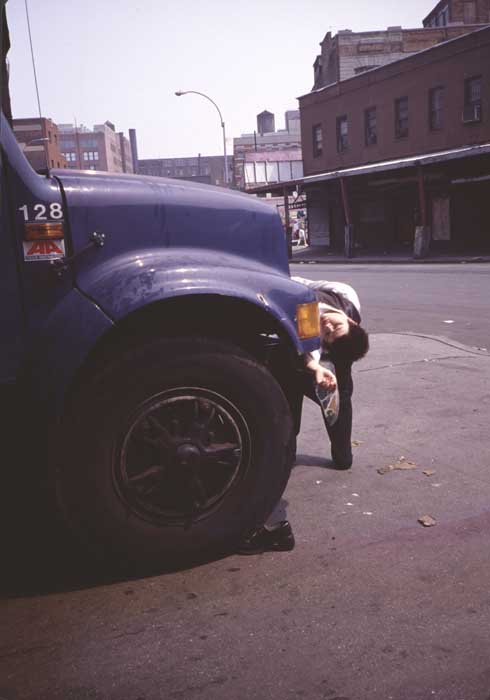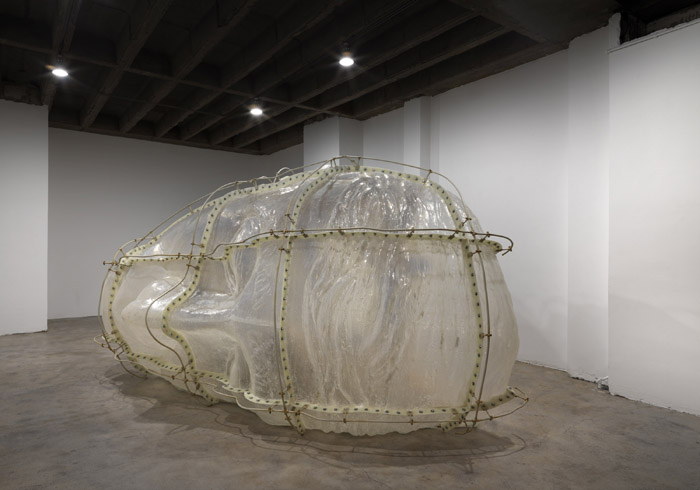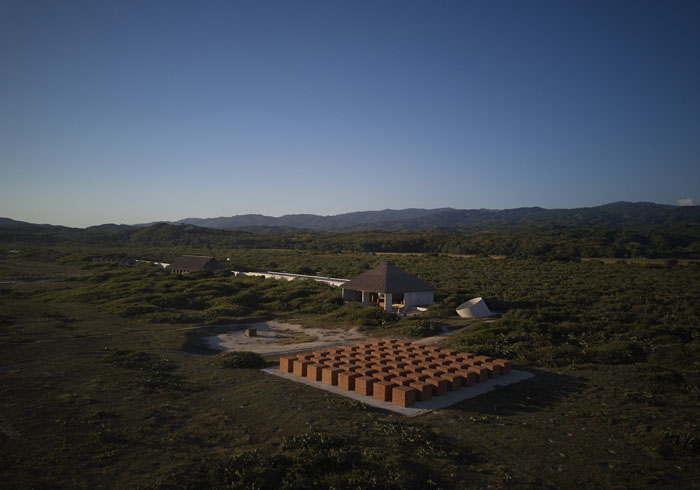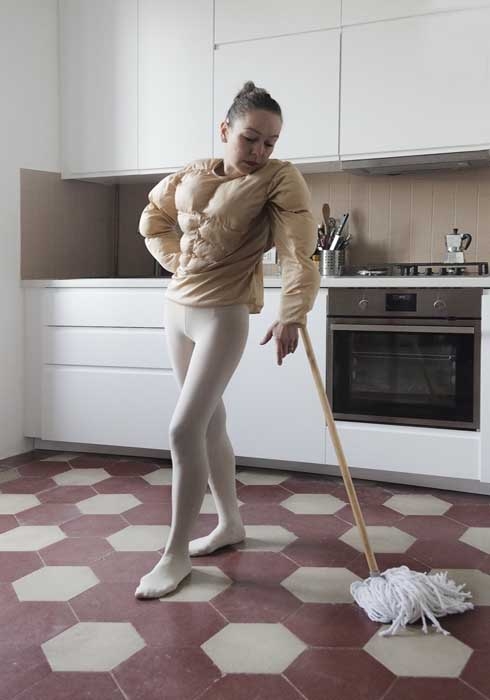Oslo Biennale, various venues, Oslo, 25 May – 2024
Yes, this month the 58th Venice Biennale opens, but we needn’t talk about that here. Someone else is doing it a few pages further on. But spare a thought for the other biennales in its shadow this month, and bear in mind that by ‘biennale’ we’re employing not the strict once-every-two-years meaning but the now-accepted usage ‘big show that happens every few years’. The Oslo Biennale, or osloBIENNALEN as it styles itself, runs for five years (making it technically a quinquennial) and unfolds in stages across the city’s public spaces. It’s not clear when that unfolding stops, but this year 26 projects by artists based in the city and elsewhere will be unveiled, selected by curators Eva González-Sancho Bodero and Per Gunnar Eeg-Tverbakk and by figures including Jonas Dahlberg, Lisa Tan, Knut Åsdam, Julien Bismuth and Marianne Heier. “The works could have a non-tangible format,” Eeg-Tverbakk told The Art Newspaper in 2018. We’ll wait and see what that means, but what’s known is that while the biennale will be augmented by the usual mix of workshops, concerts, symposia, performances, etc, in other ways its staggered structure might offer some kind of antidote to the biennial fatigue that tends to set in even before Venice has opened.

Whitney Biennial 2019, Whitney Museum of American Art, New York, 17 May – 22 September
Somewhat less in need of spotlighting is the Whitney Biennial, which tends to suck up a fair bit of the discursive oxygen whenever it lands and this year has already garnered its fair share of attention, not all of it good. Curated by Jane Panetta and Rujeko Hockley, the 79th edition – it was launched in 1932, so the maths ask for investigation – features 75 artists ranging from Olga Balema to the (now) late Barbara Hammer, Josh Kline to Diane Simpson, including a greater number of practitioners under forty, as well as a larger percentage of women, than usual. Still, it has been targeted by activist orgs. W.A.G.E. asked artists to withdraw unless the museum properly compensated them (the museum appears to have complied). Other groups such as Decolonize This Place called for the resignation of museum vice-chairman Warren Kanders, whose company, Safariland, manufactures body armour for law-enforcement agencies and the tear gas used on asylum seekers at Mexico’s border. And Michael Rakowitz pulled out in protest at Kanders’s continued presence. In short, the 1993 edition’s classification as ‘the’ political Whitney Biennial clearly needs rethinking.

Frank Bowling, Tate Britain, London, 31 May – 26 August
Tate Britain’s retrospective for Frank Bowling, who was included in the Whitney Biennial back in 1971, is likely to be quite the ride. Covering six decades of the Guyana-born, shapeshifting painter’s work, it tracks myriad, restless moves that have nevertheless been anchored by vivid colour, from still-potent Pop (as a contemporary of David Hockney and R.B. Kitaj at the Royal College of Art) to lyric fusions of abstraction and figuration, including assured experiments with poured paint and gauzy surfaces resembling geography. Bowling, who’s now eighty-five, retrospectively scans as a figure who, partly encouraged by Clement Greenberg when he moved to the US, didn’t reject Abstract Expressionism or Colour Field art in favour of Pop but continued to move between their poles; nor has he allowed himself to be typecast as a Caribbean artist, although, as he’s admitted, he sometimes played into this. These days his resistance to one approach not only looks prescient, it’ll also likely make for a fascinating, stem-twisting journey through the ensuing rooms of this victory lap.

Bernard Frize, Centre Pompidou, Paris, 29 May – 26 August
Colour has likewise been the beating heart of Bernard Frize’s work, though he’s treated it in a much more analytic manner. Frize, who began working during the 1970s when painting was on the skids, has tended to use rules and systems, from pulling skins of dried paint out of cans and appliquéing them onto canvas, to – lately – employing teams of assistants to simultaneously ‘perform’ his paintings, pulling brushes in a kind of dance to create bands of colour that mix where they crisscross wet-in-wet. Elsewhere, though, he’s folded in figurative elements and established a sideline in photography. The Pompidou’s retrospective, tracking back through the last 40 years via some 60 works, promises both to tickle the brain and irradiate the eyes, while doubling down on how very French it is by relating Frize’s art to the legendarily constraint-driven literary group, the Oulipo.

Dora Budor, Kunsthalle Basel, 24 May – 11 August
Why make your own sculpture when you can source and spotlight objects from Hollywood prop houses? That’s been Dora Budor’s modus operandi, as the Croatian artist has repurposed prosthetic cyborg body parts and architectural models used in Batman Returns, The Fifth Element, etc, though she’s also used dystopian sci-fi environments as plain inspiration, as in Year Without a Summer (Judd) (2017), wherein artificial ash fell gently onto a Donald Judd bench from a confetti dispenser. The same year, for the Pirandello-inspired Manicomio!, Budor set loose six actors playing characters played by Leonardo DiCaprio among the booths of New York’s Frieze Art Fair. If Budor’s work can be conceived as a kind of psychological test-space in which cinema and reality, fiction and fact merge, that appears set to continue in I am Gong at Kunsthalle Basel, where she plans to use sound, pollution, dust – the allergy-prone beware – and ‘environmental data from dissonant temporalities’ to create a cinematic setting that touches on the inexorable merging of the natural and the manmade.
Anicka Yi, Gladstone Gallery, Brussels, 23 April – 15 June
Budor isn’t the only artist using airborne and atmospheric materials these days, of course: a key innovator in that regard is Anicka Yi, who’s collaborated with biologists and chemists and who might still be best known for works like You Can Call Me F (2015), where she cultivated the ‘smell’ of feminism by growing bacterial swabs from 100 women in agar jellies. A work like that, and a later work in which she created a scent intended to hybridise the smells of ants and Asian-American women, found her creating atmospheric analogies for cultural anxieties. But the Seoul-born, New York-based Yi could also be seen as elevating the status of bacteria and positing a holistic interplay between the human and the natural world, and in her current show, We Have Never Been Individual, she elevates kelp, the largest biomass on Earth and one with a multiplicity of uses, in a sequence of glowing spherical sculptures with algae stretched around them, the ensemble lit by green and gold light. Another series creates ‘aquascapes’ out of microalgae and cyanobacteria, the ancient basis of all life on the planet; a third fashions sculptures from fossilised remains of animals and plants. Across the sequences, there’s an interplay of the hominid, the organic and the technological, in which – to revert to the gallery’s take – ‘the modern mythology of the human proves to be an outdated disguise for something at once smaller, greater, and more complex than we had imagined’.
Yngve Holen, Modern Art Helmut Row, London, 24 May – 27 July
Yngve Holen’s practice is, on one level, easily describable. He takes parts of industrial objects and arrays them cleanly across galleries in serial format, abstracting and formalising them – part of a CT scanner, Boeing ‘Dreamliner’ windows or car headlights or rims. Generally, though, these machined and modern things have a relation to the body, or a human subject, who’s not there: the headlights ersatz eyes; the customised rims of SUVs suggesting an owner who wants to show off their status. (Often there’s another layer, as when Holen fabricates rims in wood to point to recent trends in architecture, or clads his CT scanner casings in fetishistic materials.) Talking of which, a churl might suggest that the Norwegian-German artist’s displays – lots of approximately the same thing, each one slightly different – sync perfectly with art collectors’ desires for things that other collectors have. But the sociologically minded Holen, who studied at the hypernetworked Städelschule, is no doubt well aware of that, and would probably claim it as part of his work’s chilly, of-the-moment affect.

Filipa César, Calouste Gulbenkian Museum, Lisbon, 31 May – 2 September
In her 2017 film Spell Reel, the Berlin-based Portuguese artist/filmmaker Filipa César looked at the midcentury war of independence on the former Portuguese colony of Guinea-Bissau, crediting the film to collective authorship on the basis of the different voices she wove into the narrative. The rivers region of the Guinea of Cape Verde (a historical site of slave-trading) and collectivism recur in her newer project, Quantum Creole, in which the plans of multinationals to establish an ‘ultra-liberal free-trade zone’ in the Bissagos Islands are interwoven with the development of punch-card technology for textile production, which in turn was foundational for computing. César explores this under the sign of creolisation, connecting the weaving of subversive messages into textiles, creole reappropriation of colonists’ language and the modern versions of colonial power that arise under neoliberalism. And if that weren’t enough to grapple with, expect the essay film/installation to (appropriately) mingle visual modes, from video to 16mm to 3D animation.

Camille Henrot, König Galerie, Berlin, 27 April – 26 May
Camille Henrot has spent a few years outrunning her 2013 breakout video Grosse Fatigue, a rapid-fire history of the world’s creation told through images from Washington, DC’s Smithsonian Institution, online borrowings and a Last Poets-style poem-cum-oratory. Like much of her work, that one dealt with navigating swathes of information in order to get closer to – if never quite arrive at – some kind of truth. Lately, she’s explored another overarching, only halfway-logical system: her 3D film Saturday (2017) explored Seventh-day Adventism and the observance of the Sabbath, and now she zooms in on another day of the week. The film Tuesday (2019), to be shown here alongside a series of ambiguously anthropomorphic sculptures, locates moments of sensuality, tenderness and power struggle in interweaved footage of horses being groomed and Brazilian jujitsu combat. For Henrot, this struggling gives rise to a sense of ‘almost’ – perhaps because the result could have gone the other way. To find out how that relates to the quintessence of Tuesday, a sort of stranded, neither-this-nor-that day, hustle along to Koenig. (They’re closed on Mondays, btw.)

Bosco Sodi, Oaxacan coast, Mexico, ongoing
Last but far from least, Bosco Sodi’s Atlante (2019) is, by the numbers, a modern-day epic. Inaugurated recently on the Oaxacan coast of Mexico, it’s a synthesis of Land art and Minimalism laced with entropy: a grid of 64 cubes each consisting of 1,600 bricks handmade by Sodi and local craftsmen – over 102,000 bricks, weighing more than 700 tons – and is intended, like some ancient monument, as a kind of observatory for watching the change of the seasons. But it also points to a longer metric of change, as part of its sculptural syntax is the weeds and other flora that will grow up around it, and the way it will inevitably erode. So while you can walk around it and note the variations in each cube that have come, apparently, from the bricks being fired in a traditional brick kiln with wood, jacaranda seeds and coconut shells, one might also muse on eternity: on art that’ll outlive us all – if it isn’t washed away – and, like the rest of us, will probably never look better than it does today.
From the May 2019 issue of ArtReview
